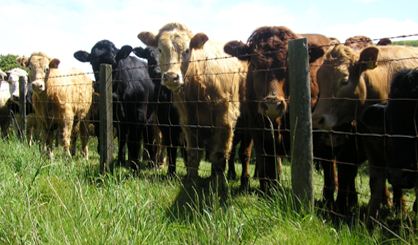



Have Cattle Prices and Lost Grazing Acres Altered Cow Culling Priorities?
Management decisions relating to culling stock cows have increased dramatically in complexity under current market conditions, writes cow/calf specialist Jim Krantz.The January 1 USDA inventory of “all cows and heifers calved”, is the lowest total since 1941, indicating some potential for continued profitability in the cow/calf sector for several years to come.
These unprecedented profit levels create a market climate that alters many of our historic recommendations on culling cows, adds Mr Krantz of South Dakota University Extension.

When reviewing the factors that influence culling decisions, about 80 percent of cows are culled because they are open, age or teeth concerns, or simply unproductive. The remaining 20 percent leave the herd because they produced small calves, had dispositions problems, were injured, or had udder problems and, in some cases, eye concerns.
An alarming statistic from the 2007-2008 NAHMS survey revealed that almost 32 percent of cull cows originate from the five to nine year-old age group. That timeframe corresponds to what should be the most productive years of the cow’s life cycle.
Cattlemen often look to University Beef specialists for guidance as they plan their culling priorities for the year. Often, conditions out of their control (drought, low prices) dictate that they increase their culling rates (national average range is 15-20 percent) beyond normal levels and that requires some serious decision-making considerations.
Requesting a second opinion just makes sense. Those opinions for cull-rankings are based on the most current production and marketing information available and, unfortunately, are generalized for the entire industry, not individual operations.

Consistently, open cows rank first on that list as well they should. Ignoring that recommendation defies economics as that individual would need the profits from more than one of her subsequent calves to pay the feed bill for her non-contributing year.
Culling priorities differ after the open status but those with liabilities such as teeth, eye or feet and leg concerns are the next best candidates. Some individuals recommend that late-calving and older cows move ahead of those with physical limitations.
*
"Unimaginable profit levels and the potential for them to continue, makes it essential for cattlemen to re-think their culling approach."
Disposition ranks above both of the above-named categories for some while that negative is less restrictive in other cases. It is important to remember that these criteria are framed with some consideration for the need to cull deeper due to atypical circumstances. In today’s market environment, the rank-order may deserve some review and further consideration.
It would seem that the lead-factor, open cows, remains unchanged. Even under current inventory levels and industry optimism, feed costs alone make it difficult to justify not culling an open $1200 cow. However, depending on how late the “late-calver” is, you might want to give her another chance.
Reproductive technologies such as CIDRS, along with nutritional adjustments, make it possible to move this category of cows more in line with the rest of the cow herd. There could also be an opportunity to market these cows to operations that have a later calving season, especially when bred cows are in high demand. With the increasingly limited grazing acres available, those physically-challenged and older cows may be great candidates for partial or total drylot management programs.
Those systems have the potential to extend the productive lifetime of cows that could still produce $1100 calves under more intense management that would otherwise be culling candidates in a grazing based system.
Temperamental cows find no favor in just about all programs but should an exception be made because of her potential economic value as mother cow? It would seem that this factor for consideration is strictly on an individual basis. The “man-eater” needs to go regardless while the cow that is a bit overprotective at the birth of her calf may be tolerable. Culling decisions are part of the reality of a cow/calf operation and account for about 15-20 percent of the income of that operation.
Traditionally, culling priorities have not changed much over the years. However, there may be little in the way of “traditional” in today’s cattle industry. Unimaginable profit levels and the potential for them to continue, makes it essential for cattlemen to re-think their culling approach. Those decisions need to focus on economics rather than tradition.


